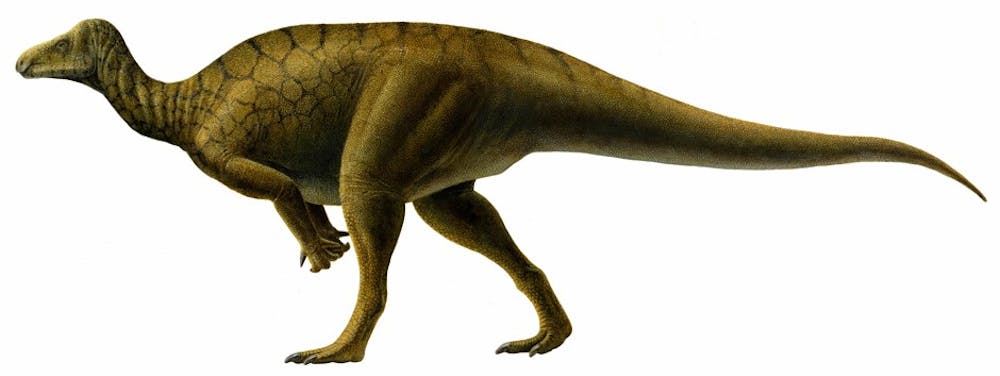Roughly 900 dinosaur species have been discovered to date — and a few of owe their names to Penn graduate student Andrew McDonald.
McDonald, a third year Earth and Environmental Sciences graduate student, was responsible for naming two new dinosaur species earlier this year. discovered by a team led by Utah State paleontologist, James Kirkland.
When paleontologists in eastern Utah found bits of bone protruding from the ground, they had reason to believe that there would be more intact bones underneath. “They decided to dig in a little and found extensive quarries,” McDonald said.
It took several years to excavate the bones from the hard rock in which they were encased, he explained. The excavation process was completed in 2008.
The dinosaur skeletons discovered belong to members of the Iguanodon genus, the group on which McDonald focuses his research. He knew the paleontologists who discovered the skeletons, and they allowed him to name the species based on his interest.
According to McDonald, naming the dinosaurs and exploring the etymology of those names are two of his favorite aspects of paleontology. “A name should be concise, easy to pronounce, sound good and at least generally describe the animal,” he said, explaining the rationale behind his choice of names.
One of the species is named Hippodraca scutodens. Referencing the long, low shape of its skull, McDonald chose to combine the Greek and Latin words for “horse” and “dragon” to arrive at the name Hippodraca. The latter part of the name means “shield tooth,” he said.
McDonald named the second species Iguanacolossus fortis. Although the names he chose are derived from Greek and Latin roots, McDonald spoke of a new trend among paleontologists to use languages from the area in which the skeletons are found.
Last May, McDonald named a dinosaur that had been found in New Mexico. Honoring the area’s past, he used the native language and called the species Jeyawati rugoculus.
If recent patterns continue, McDonald will be naming many more species during his career. “For the past two decades [finding a new dinosaur] has been rather a common occurrence,” he said. In 2010 alone, 50 new species have been named.



